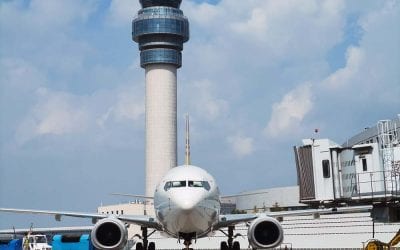
While the FAA sequestration fiasco had been brewing, airline and pilot lobbyists together with the Consumer Travel Alliance were furiously working behind the scenes in unprecedented unity to head off what each group saw as a possible pending disaster involving delays and misuse of earmarked aviation system funds.
The Department of Transportation (DOT) and the Federal Aviation Administration (FAA) reacted as though they were in a financial straitjacket. All the while, the administration and the Senate sat on the sidelines waiting to see how public opinion would break; and, the Republican-controlled house came out swinging against any cutbacks claiming DOT and the FAA has all the flexibility to move funds they needed in order to avoid cutbacks in air traffic control schedules.
Airlines, through Airlines for America and pilots unions, began their drumbeat about impending disastrous delays and acute problems with safety. Consumer groups, mainly the Consumer Travel Alliance, piled on with more warning about delays, but with another claim that airline passengers were being robbed of air traffic control services they pay for with earmarked user fees.
Sequestration at the time, was a bit nebulous and restricted to civil servants being forced to take a day off once-a-month or so. No one in America was too excited. Coming cuts weren’t going to be Armageddon.
Then the FAA began to announce cuts. Their first slice at the budget indicated that some air traffic control towers would be shut down and others would be closed during night operations. Now, citizens across the country could easily understand safety and cutbacks in airline service. That was the first bipartisan wake-up call.
Newspapers, both national, regional and local, across the country slammed the FAA for sacrificing safety and on-time airline schedules on a political altar driving higher taxes. Cynical claims that the administration was seeking to extract maximum pain on citizens rather than find non-operational ways to solve the two-and-a-half-cents-on-the-dollar cutback demanded by sequestration began to surface.
Newspaper stories highlighted every airline delay, whether they had anything to do with the sequestration cut or not, were splashed across the front pages of dailies from Portland, Maine, to San Diego, Calif. Business travelers complained about missing meetings. Moms with toddlers talked about their struggles aboard delayed planes. Foreign travelers told tales about circling in holding patterns for hours. Every delay was treated as if it was a direct result of heartless (and worse, mindless) FAA actions.
Then airlines requested formal permission from DOT to keep passengers confined for hours on end aboard aircraft on tarmacs across the country — all because of these air-traffic cutbacks. Our aviation system was teetering on the edge of operational meltdown, an abyss of unknown profundity.
A more dire picture could not have been orchestrated across industry and consumer groups on the ground in Washington and the news media across the country.
On Wednesday, the President’s office released a statement that it would consider a specific bill that could provide flexibility for DOT and FAA budgeting. On Thursday night, the Senate bulled through a bill that ensured that the DOT and FAA clearly had the flexibility they needed. House Republican groused that the bill wasn’t needed, but agreed they would follow the Senate and pass the legislation.
Now, the FAA needs to unwind their sequestration actions and get air traffic schedules back to normal.
If reality be known, air-traffic delays were not disastrous. The FAA managed to keep the system operational despite drastic predictions of massive problems. With self-imposed airline departure cutbacks and air-traffic-controller staffing levels (even with a 10 percent cutback) at more-or-less the same levels as 2000, pre-9/11, there was probably not going to be an aviation-system meltdown.
However, warnings of disaster and stories of what might be, trumped reality. Then again, who knows what might have happened? And, as politicians wisely decided, it is better to find a way to solve a problem before it becomes one.
In the end, the airlines, pilots and consumers got their aviation system off the chopping block and user-fee funding back to being provided to services for which it was intended.
Now, that the common foe of air traffic controller sequestration budget cuts has been vanquished, it is back to work for the Consumer Travel Alliance to make sure that DOT does not grant airlines any waivers to tarmac-delay rules. Or, better yet, that the airlines withdraw their request.

Charlie Leocha is the President of Travelers United. He has been working in Washington, DC, for the past 14 years with Congress, the Department of Transportation, and industry stakeholders on travel issues. He was the first consumer representative to the Advisory Committee for Aviation Consumer Protections appointed by the Secretary of Transportation from 2012 through 2018.


